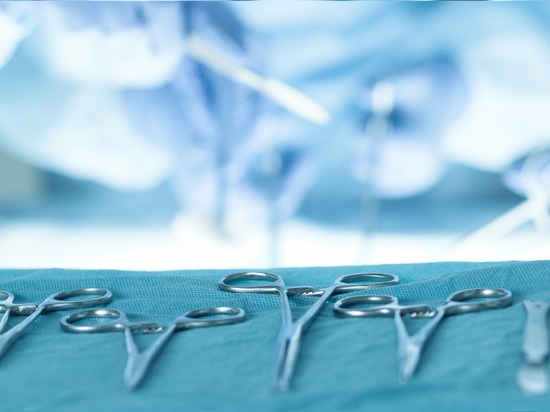
#Industry News
AI Healthcare and Surgery: A Match Made in Heaven?
AI Advantages in Surgery
The healthcare sector is always striving to minimize risks for staff and patients. This is why medical computers are used throughout most clinics and hospitals. They've been specially built from the ground up so as not to interfere with numerous medical devices.
By their very nature, surgical procedures carry risks. Many providers and medical groups are increasingly bringing artificial intelligence (AI) into the surgical process to reduce them. We cover that process today, going through the four phases and AI's usefulness. We then discuss three features that make medical computers vital in the success of AI in healthcare.
How AI Is Used In Surgery
Surgery is usually divided into three official stages and an unofficial "fourth" one. AI is useful in all of them.
Surgical Prevention
One of the reasons providers will try to avoid almost all surgeries is complications.
Take a look at peripheral artery disease (PAD). This is the narrowing or blockage of blood vessels from the heart to the legs. If severe enough, amputation of the limb may be the only option. Providers thus strive to detect the condition as soon as possible.
Unfortunately, it can be challenging to detect. Providers are turning to AI in the hopes of detecting – and even anticipating – PAD early enough to treat it without surgery.
Preoperative Phase
The preoperative stage is when surgery is determined to be the best option to treat a patient's illness.
AI can be used in several ways at this stage:
Data on the patient is gathered. Examples include standard blood tests and scans and images from X-rays, CT, ultrasound, PET, and MRI.
Machine Learning (ML) is used to classify those scans and images.
Deep Learning (DL) algorithms go through ML results. Depending on the complexity or sophistication of the DL, it can detect abnormalities from CT scans, for example. This can then be brought to the surgeon's attention, like any risks associated with the surgical procedure.
Intraoperative Phase
The intraoperative phase is when the patient is brought into the operating theater, treated, closed up, and rolled out. AI is used for:
Increased performance in minimally invasive surgeries. Robot-assisted surgeries (RAS) are the most well-known of this type of surgery. This is where the surgeon controls various precision-guided robotic arms, which actually do the procedure like incisions. AI used during RAS can assist in reducing the impact of tremors from the surgeon's hands to the prevention of unintentional or accidental motions during eye surgeries. This, in turn, lowers the risk of infection, reduces blood loss, and achieves more negligible scarring.
Interpreting the surgeon's facial expressions to control surgical medical devices like "FAce MOUSe." This is a laparoscope controlled with the simple movement of their eyes. It works by the AI monitoring the face and making the proper adjustments to the instrument in real time.
Monitoring and providing real-time data on the patient during the surgery. The AI can create a 3D model of the surgical site using intraoperative shape instantiation (also known as 3D Shape instantiation-endoscopic navigation). The surgeon reviews the provided depth estimation, visual odometry, three-dimensional reconstruction, and localization. They can then determine when, how, and how much to proceed with the operation.
More efficient handling and passing surgical instruments to the surgeon via a robotic "scrub nurse." All is done non-verbally as the AI monitors the surgeon's fingertips for signals.
Postoperative Phase
The postoperative phase is the final phase of surgery. It usually starts after the operation and lasts for the hospital stay. Depending on what procedure was performed, the phase may even continue after the patient's been discharged and recovering at a residence.
Healthcare AI in this phase may be used to:
Predict postoperative complications.
Monitor high-risk patients closely and effectively.
Electronic health records (EHR) are used by the AI in this phase. Its algorithms comb them to calculate chances for infection, levels of pain, etc. The medical staff then provides postoperative care like remote patient monitoring or hospital-at-home care.
Most Commonly Used Computers for AI Healthcare Surgery
Artificial intelligence used in all the above phases needs large amounts of data from EHR to the patient's vitals. Medical computers are the best to provide that information. That is because:
Medical grade
A computer certified to be 60601-1 means it has met the highest requirements available for safe use in medical settings and near patients. That is because medical grade computers have been independently tested for hazards like fire, ignition from flammable anesthetics, electrical shock, mechanical impact, excessive electrical energy output, and radiation. They won't interfere with potentially life-sustaining or saving nearby medical devices like an anesthesia machine.
Legacy device compatibility
Many operating rooms use medical devices that their original manufacturer no longer supports.
These are called "legacy devices," and the anesthesia machine mentioned above is an example of one. Medical computers will come with built-in legacy ports, allowing them to connect with the devices and provide data for AI.
Medical grade monitors
While not computers, medical monitors are vital in operating rooms. They provide clear and vivid imagery, which is essential to the surgeons who have to see in dark and tight places in the patient's body. Surgical staff like the anesthesiologist also benefit from monitoring the patient's vitals. Finally, medical grade monitors won't interfere with the numerous medical devices in the OR.
Closing Thoughts
Artificial Intelligence is used in the significant phases of surgery to reduce risk and improve patient outcomes.
Branches of AI, like machine learning and deep learning, help surgeons in everything from prepping for surgery to post-op, where predictive models provide the best healing options for recovering patients.
Contact an expert at Cybernet if you're interested in learning how medical computers are the best choice to work with the AI used in your operating rooms.







